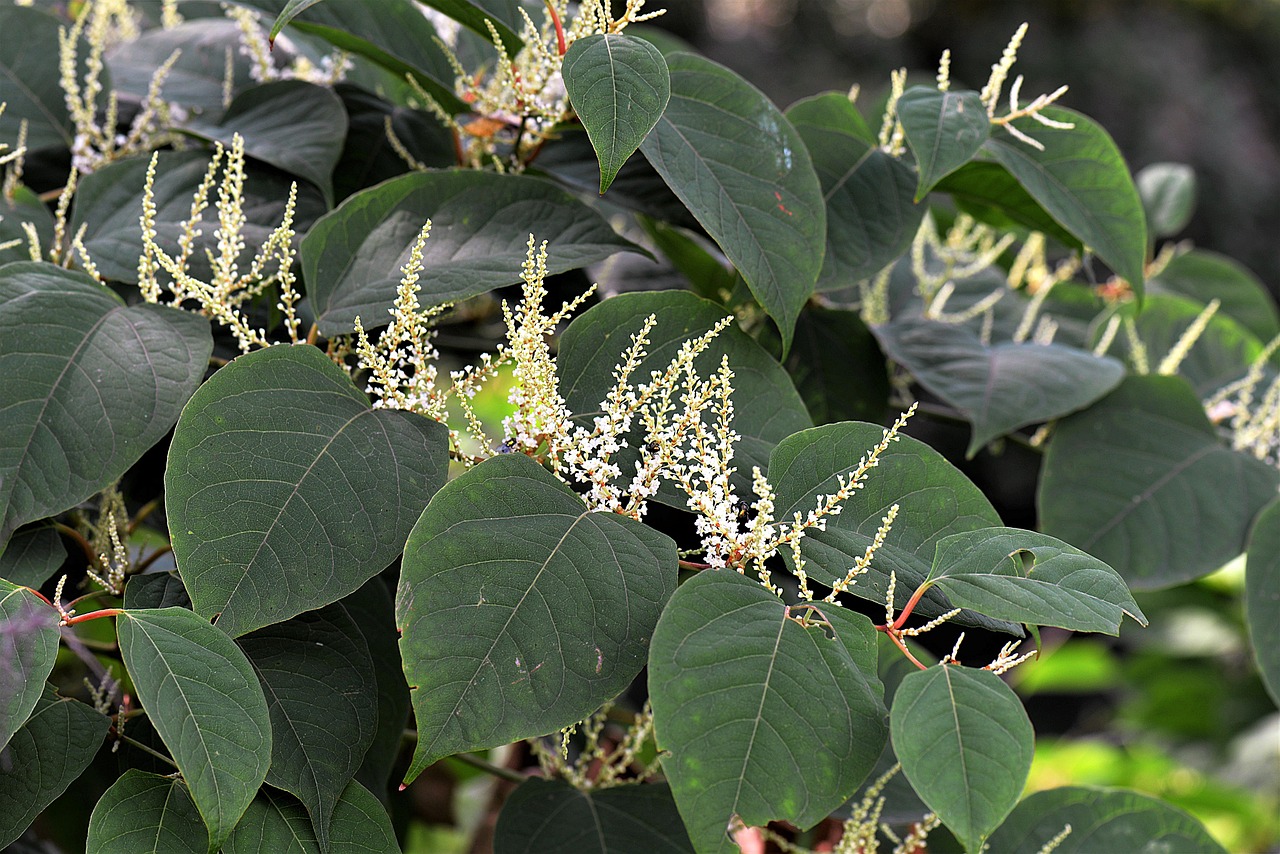Japanese Knotweed
Japanese Knotweed (Fallopia japonica) is a highly invasive plant species that originates from East Asia. Introduced to Europe and North America in the 19th century as an ornamental plant, it has since become a serious environmental and economic threat. Known for its rapid growth, resilience, and ability to dominate landscapes, Japanese Knotweed is notorious for causing extensive damage to buildings, roads, and natural habitats.
The plant has distinct features that make it easily identifiable. It typically grows in dense, bamboo-like stands, with tall, hollow, and jointed stems that can reach heights of up to 10 feet (3 meters). Its large, heart-shaped leaves are green in color and arranged alternately along the stems. In late summer and early autumn, the plant produces clusters of small, creamy white flowers, which attract a variety of pollinators.
The success of Japanese Knotweed as an invasive species lies in its ability to propagate and spread rapidly. It can regenerate from small fragments of its rhizomes (underground stems), making even tiny fragments capable of growing into new plants. Additionally, the plant can thrive in various soil types, tolerate harsh environmental conditions, and outcompete native vegetation, disrupting local ecosystems.

Removal and Control Methods:
Controlling Japanese Knotweed is challenging and requires persistence, as it is resistant to many herbicides and mechanical removal methods. If you discover Japanese Knotweed on your property or in your area, here are some ways to manage and control its spread:
Herbicides: While Japanese Knotweed is resilient, certain herbicides can be effective in controlling its growth. Glyphosate-based herbicides are commonly used, but they should be applied by a trained professional to ensure proper application and minimize harm to non-target species. Treatment may require multiple applications over several growing seasons to be effective.
Cutting and Digging: Cutting down the plant can help weaken it, but this method alone is not sufficient for complete eradication. To improve effectiveness, cut the plant back to the ground several times during the growing season and dispose of the cuttings responsibly to prevent further spread.
Smothering: Smothering the plant with a thick layer of non-porous material, such as heavy-duty plastic sheeting or geotextile fabric, can help suppress its growth. However, this method may take several years to be successful and requires constant monitoring.
Root Barriers: Installing root barriers, such as underground barriers made of durable materials, can help prevent the spread of rhizomes to adjacent properties or sensitive areas.
Biocontrol: Some regions have experimented with introducing specific insect species or fungi that target Japanese Knotweed while leaving other plants unharmed. However, this method requires careful consideration to avoid unintended ecological consequences.
Professional Help: Given the resilient nature of Japanese Knotweed, it is often best to seek professional assistance for effective and safe removal. Certified invasive species management companies can apply appropriate control measures and ensure proper disposal.
Important Note: When attempting to remove Japanese Knotweed, always be cautious to avoid inadvertently spreading the plant further. Do not compost or dispose of the plant material in regular green waste, as it can easily regrow. Instead, consult local authorities for guidance on proper disposal or seek professional assistance. Whilst its not illegal to have Japanese Knotweed growing on your property in the UK, its illegal to allow it to spread in the wild, or onto any adjacent properties.
Do you need help removing Japanese Knotweed?
Japanese Knotweed poses a significant threat to natural habitats and human-made structures. Its eradication requires a combination of methods and long-term commitment to prevent further spreading and restore the balance of native ecosystems. Immediate action and responsible management are essential to mitigate its destructive impact.
Contact us today if you want help removing Japanese Knotweed from your garden.
